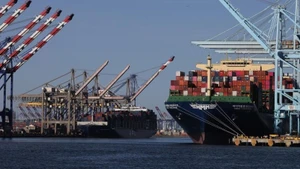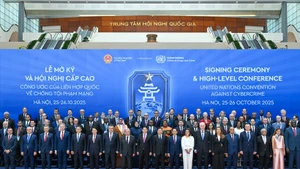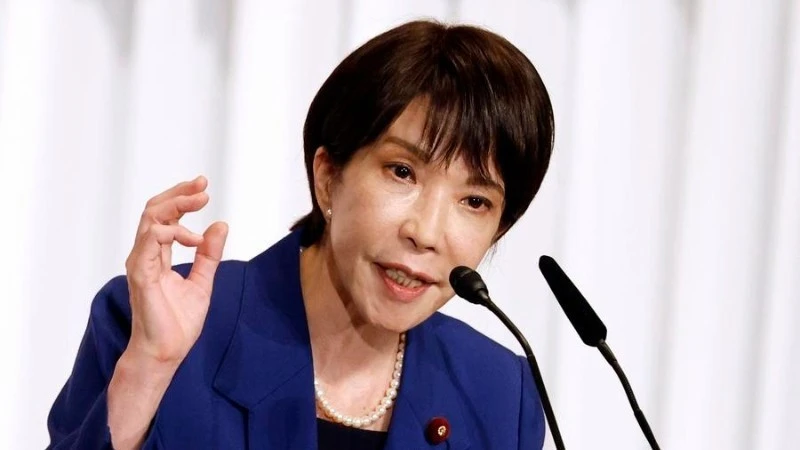Accordingly, the world needs to triple renewable energy capacity by 2030 and double efficient energy infrastructure, as well as increasing sales of heat pump equipment and electric vehicles.
The world needs to invest 4.5 trillion USD per year in the transition to clean energy from the beginning of the next decade. However, realising this goal is not easy.
Positive signs
The IEA report was issued on the eve of the 28th Conference of the Parties to the United Nations Framework Convention on Climate Change (COP28). According to IEA Director Fatih Birol, the path to the goal of limiting temperature increases by 1.5C has been narrowed over the past two years, but clean energy technologies are helping to reverse this trend.
The report points to progress demonstrated by solar power capacity and record-high electric vehicle sales. This is in line with the roadmap outlined by the IEA, to achieve the carbon neutrality target, as well as plans of the industry to deploy appropriate new production methods.
According to the IEA, the energy sector is changing faster than imagined and clean energy technologies are taking on a third of the emissions reductions that need to be fulfilled by 2030.
This month, the IEA also released a forecast that demand for oil, gas and coal will peak this decade, before entering a period of decline, thanks to the significant growth of clean energy technologies and electric cars.
Global survey results, conducted by Glocalities and Global Citizen in 21 countries around the world, during the first six months of this year, revealed that nearly 70% of respondents support the use of solar energy, five times higher than the rate in favour of fossil fuels.
Accordingly, solar energy is the most popular energy source, with 68% of people supporting it, followed by wind energy (54%), hydropower (35%) and nuclear energy (24%). The percentage in favour of fossil fuels is 14%.
This reinforces the results of previous polls showing strong support for renewable energy sources in Europe and the US. According to the latest survey results of the European Union's (EU) Eurobarometer Research Institute, conducted in May and June, 85% of European respondents advocate investing in renewable energy sources, such as wind and solar energy.
Meanwhile, Pew Research Centre poll results published in early 2022, showed that 69% of adults in the US back the development of alternative energy sources, instead of increasing oil production, coal and natural gas.
Worrisome paradox
The expansion of investment in fossil fuels, while emissions remain high, during the post-COVID economic recovery and the energy crisis, is causing concerns about the implementation of commitments on climate change combat.
The development of fossil fuel is inconsistent with the goal of global decarbonisation by mid-century and the goal of limiting temperature rise to 1.5C. According to Global Citizen co-founder Michael Sheldrick, fossil fuels still accounted for 77% of the world’s total energy consumption in 2022.
In many countries among the world’s biggest polluters, progress in reducing emissions in the energy sector is not fast enough to meet the goal of curbing temperature rise, as committed in the Paris Agreement on climate change.
According to Climate Action Tracker’s (CAT) analysis of Australia, Brazil, the UK, Chile, China, the EU, Germany, India, Indonesia, Japan, Mexico, Morocco, Turkey, South Africa, United Arab Emirates and the US, no country or bloc in this group have made progress in achieving the above goal.
Governments are still delaying phasing out fossil fuels, despite opportunities to expand wind and solar energy.
According to CAT, to clean up the power sector by 2040, developed countries must gradually eliminate coal by 2030 and “unabated” fossil gas (a term that refers to the extraction of fossil fuels, that do not have a mechanism to remove the bulk of their emissions) by 2035. The deadline set for developing countries is 2040.
Additionally, all countries must source more than 80% of their electricity from renewable energy sources, such as wind and solar by 2035 and between 90 and 100% by 2050, if they want to meet CAT standards. However, reality shows that no country in the analysis report has a clear plan to gradually reduce gas use.
The IEA says the world has delayed climate action for so long, that now there are only difficult choices left. Rich countries must set a target of carbon neutrality by 2045, five years earlier than the current target.
According to the IEA, staying on track means that most countries must push forward the deadline to achieve the emissions neutrality target and sharply increase clean energy capacity, with specific policies, in addition to reducing fossil fuel demand by 25% by 2030. The world also needs to cut methane emissions in the energy sector by 75%, at a cost of about 75 billion USD (only 2% of the net income of the oil and gas industry in 2022).
However, to achieve the set goals, CAT emphasised that developing countries urgently need financial aid to eliminate fossil fuels.
The current rate of fossil energy use in many countries shows a worrying paradox that fossil fuels are still the main source of energy, despite strong public support for renewable energy.
Although countries are making efforts to focus on green transition, it remains a challenging process.
















